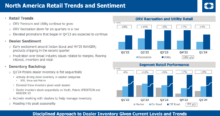Small data, big payoff for hiring
 Talent: the ability and aptitude to complete athletic, academic and artistic tasks. The explosion of data available from every device, website, nook, and cranny of life has allowed organizations to plow through mountains of resumes digging for indicators of a candidate’s talent, saving time and money finding the right person for the job.
Talent: the ability and aptitude to complete athletic, academic and artistic tasks. The explosion of data available from every device, website, nook, and cranny of life has allowed organizations to plow through mountains of resumes digging for indicators of a candidate’s talent, saving time and money finding the right person for the job.
Maybe out of reach for the small business, but not impractical when applied to scale. A spreadsheet and a little bit of time can provide a small business with enough data it needs to help tune its recruitment process and hiring criteria.
Three simple analyses that one company, and every company, can do to hire and promote better: 1) Look at how new hires compared to current employees, 2) compare qualities of high potential employees with qualities of those actually promoted and 3) compare the strengths of members of a group with established qualities a group would need to succeed.
Three simple things the article’s authors Nik Kinley and Schlomo Ben-Hur suggested the company do to nail down the real success of its hiring and promotion strategies. They don’t require vast digital networks and they’re not encompassing; just a spreadsheet and a desire to understand. If you want the big picture, you have to stand back and look at the whole thing, catching the bigger details before you engross yourself in the small ones.
Fueling the fire overheats the engine
Even personal habits can become encompassing and detrimental to their original goal. I’m a bit of a life-logger; not just driven by a love of technology (which comes with with the “millennial” territory), but driven by genuinely curiousity to see if any of the little parts of my life could be gathered to help me understand and determine more closely how the things I eat, the exercise I get, and amount I sleep I have contributes to my overall well-being and happiness.
Eventually, like a lot of other loggers, I was finding that I was spending more time gathering information to analyze than was actually spent analyzing and utilizing it to make better decisions. Rather than utilizing the data I was gathering and picking it apart and to determine the factors contributing to rise and fall in mood and health, I was spending all my resources just to get it all in one place. The tool became something I did, no longer a tool.
Social media has provided the same illusion as big data: The feeling that being connected to more is the solution to missing out on data or relationships. But, many are finding that as people and processes are relegated to proxy, we lose touch with the original reason for using it and drive in the first place. The tool becomes complex and time-consuming, eventually becoming the thing we do instead of the tool that helps us.
Inevitably this lead to a collapse of the processes I set up as new relationships, new goals, new habits and projects worked their way in. I couldn’t keep up with the abundance of ways and items I was tracking, and I certainly didn’t the time or priority for them anymore. A rigid structure had been created to bring it all together, and that rigid structure couldn’t adapt to the inevitability of change.
Soon, nothing was being tracked. I couldn’t handle all of the requirements and directions necessary to continue. But now, instead of focusing on the small things, I could step back and look at how larger choices were affecting me. In the end, what I found was for more important to determining goals or direction.
And the same thing happens in business. As a company tries to determine bigger and better ways to process and gather information to make educated decisions, it can become rigid and locked into those processes, resulting in resistance to growth or innovation and disaster or failure when things change.
Worst of all, those big initiatives and that big data may not be necessary to achieve the required results. They can be powerful ways to determine more granularly how our company is hiring and promoting, but learning to walk with small data can be enough to fix bad internal processes. Just like the average person doesn’t need to train for a triathlon to stay in shape, not every company needs aggregated personality and aptitude scores over time for all employees to run a successful ship.
Look at your employees and your business and determine what’s important: How do new hires line up with the rest of the staff: Are you really promoting the most qualified employees or are there other variables in play: Determine what you need to be successful in the different parts of your business: And then look to see if you’re actually sticking to it.
Christopher Gerber is the associate digital editor of Powersports Business and its sister publication Boating Industry, trade magazines for the powersports and boating industries. He manages the Powersports Business website and compiles and contributes to PSB’s twice weekly e-newsletter. Powersports Business is known for its exclusive national dealer surveys and in-depth industry analysis.
Contact: cgerber@PowersportsBusiness.com
Website: www.powersportsbusiness.com








